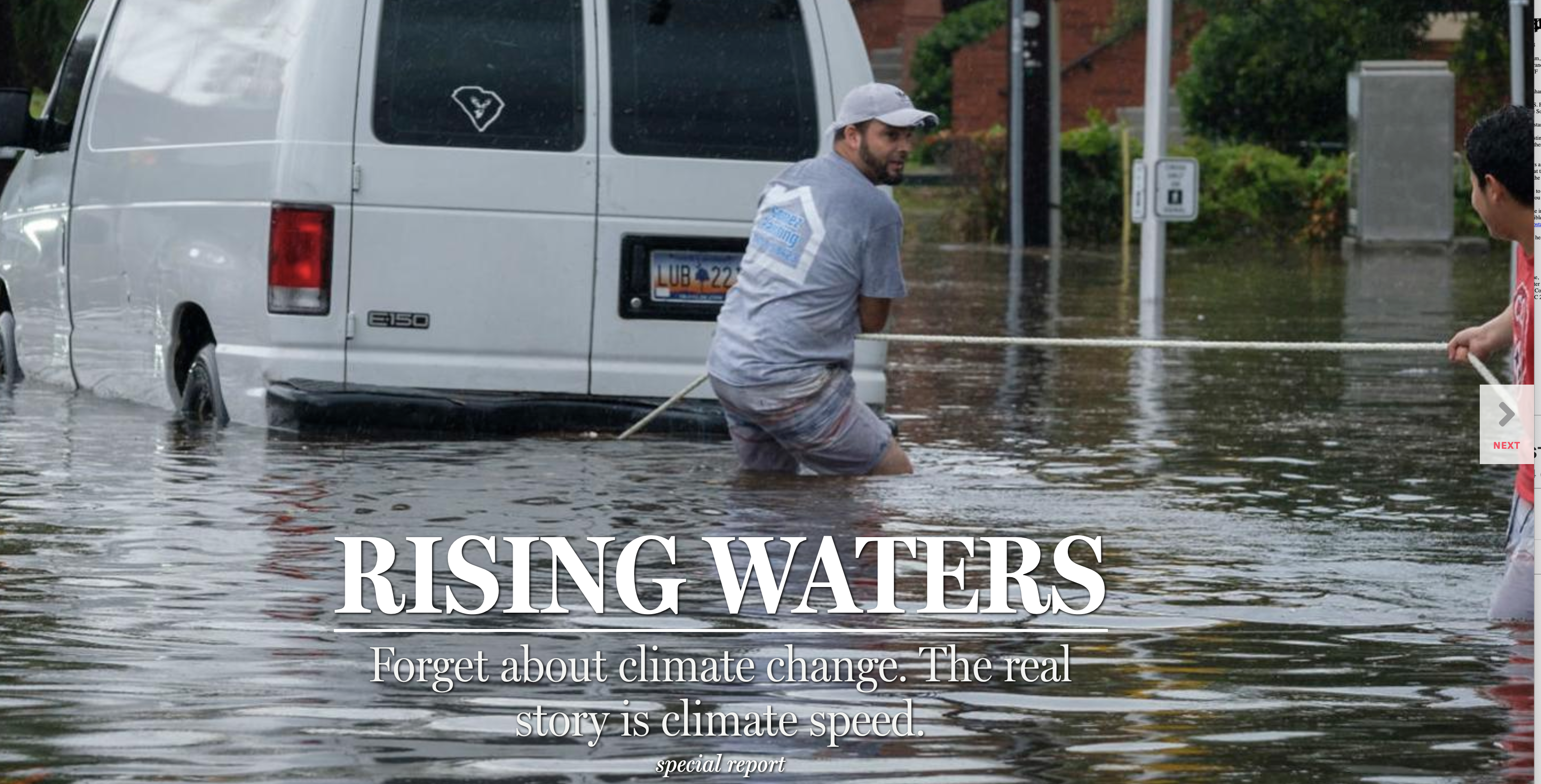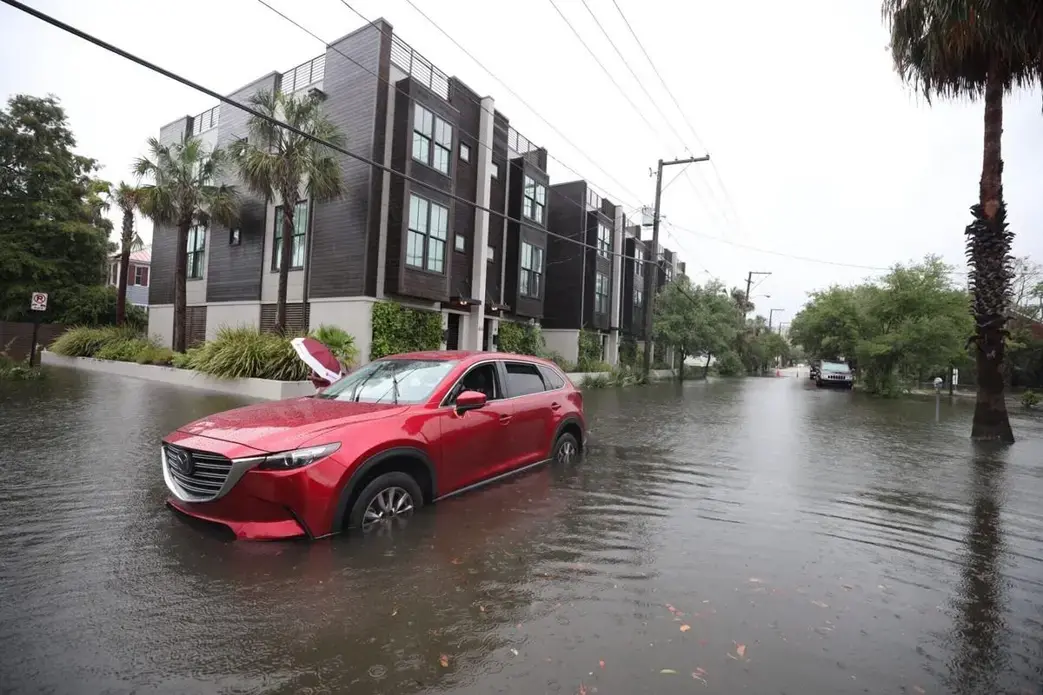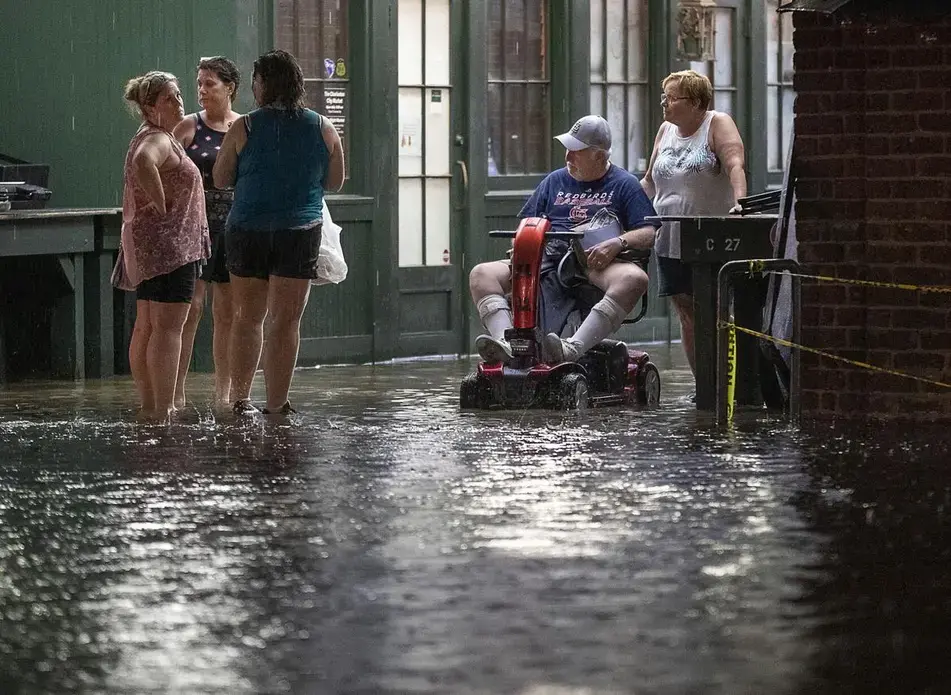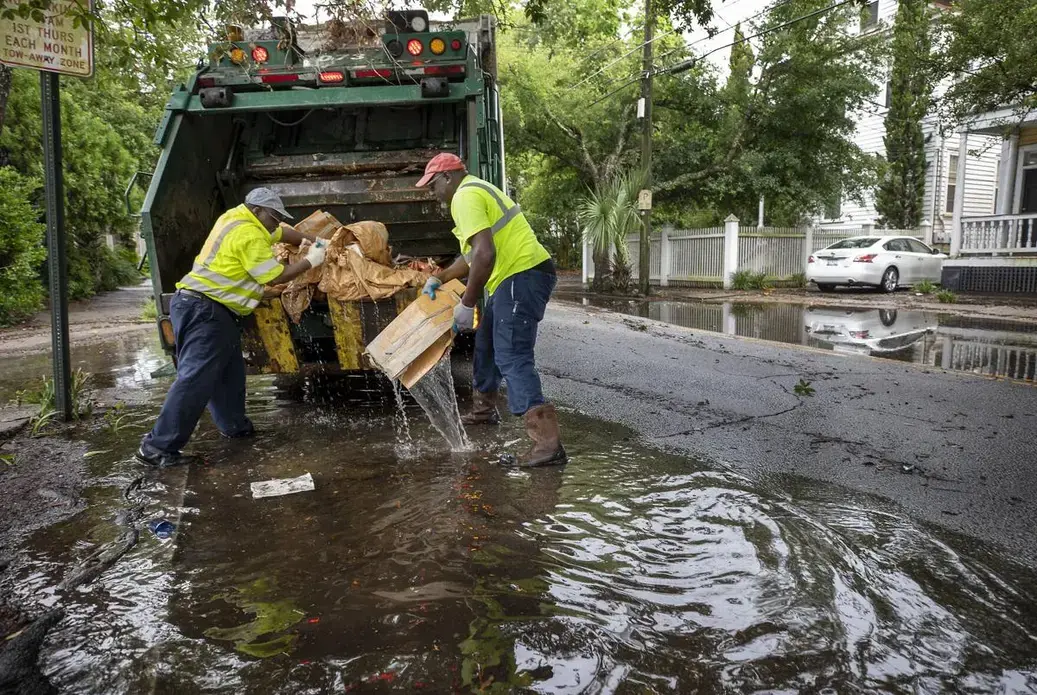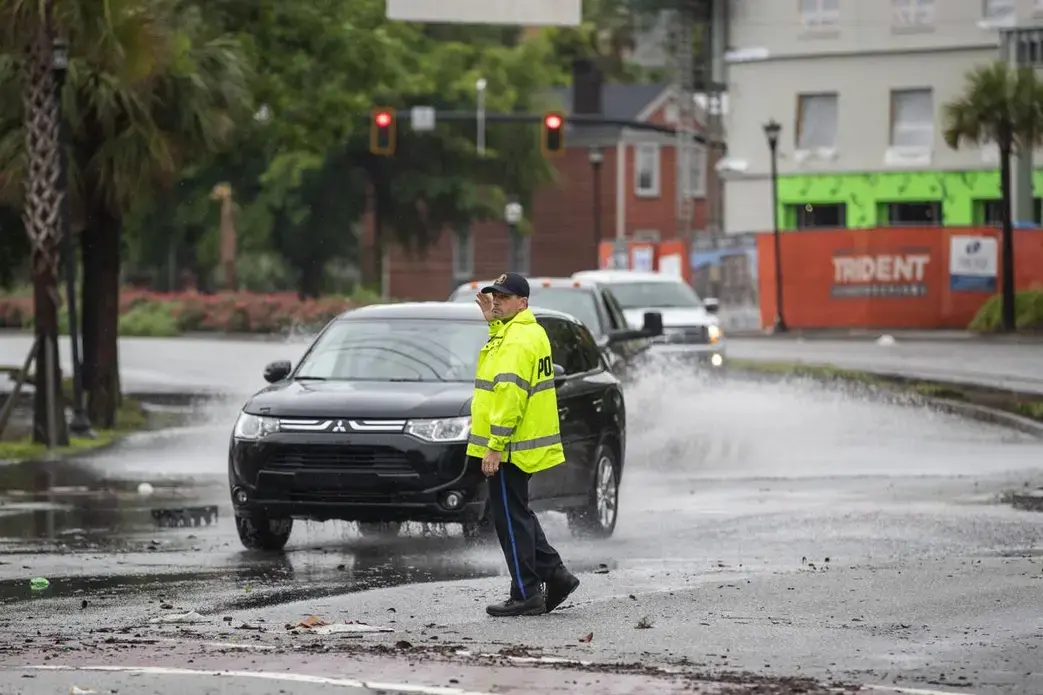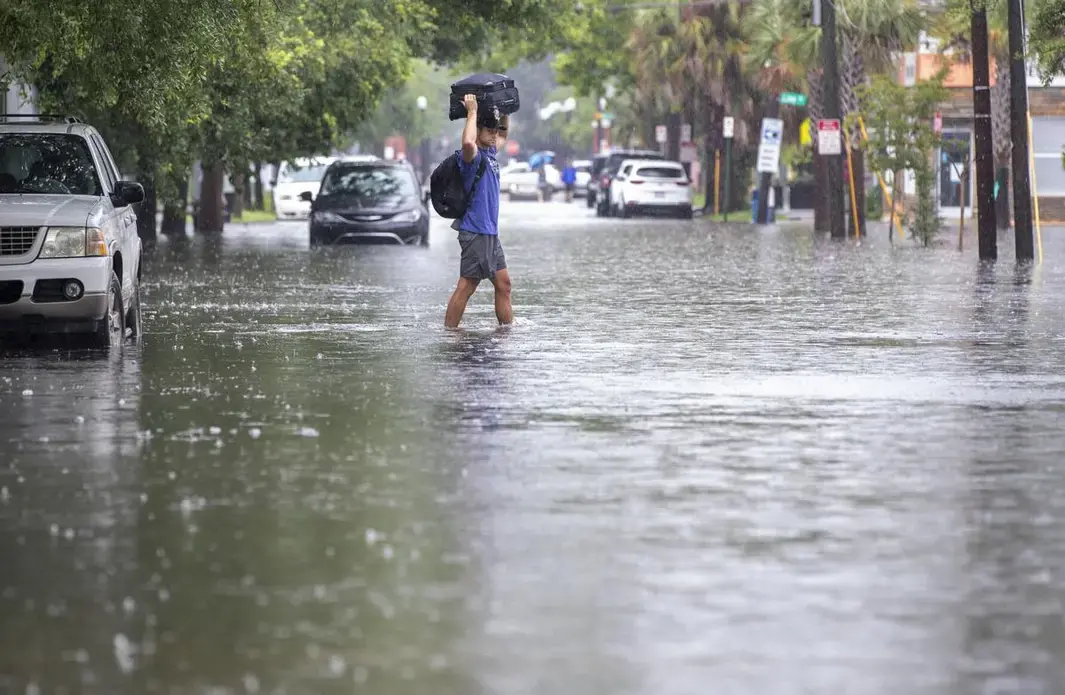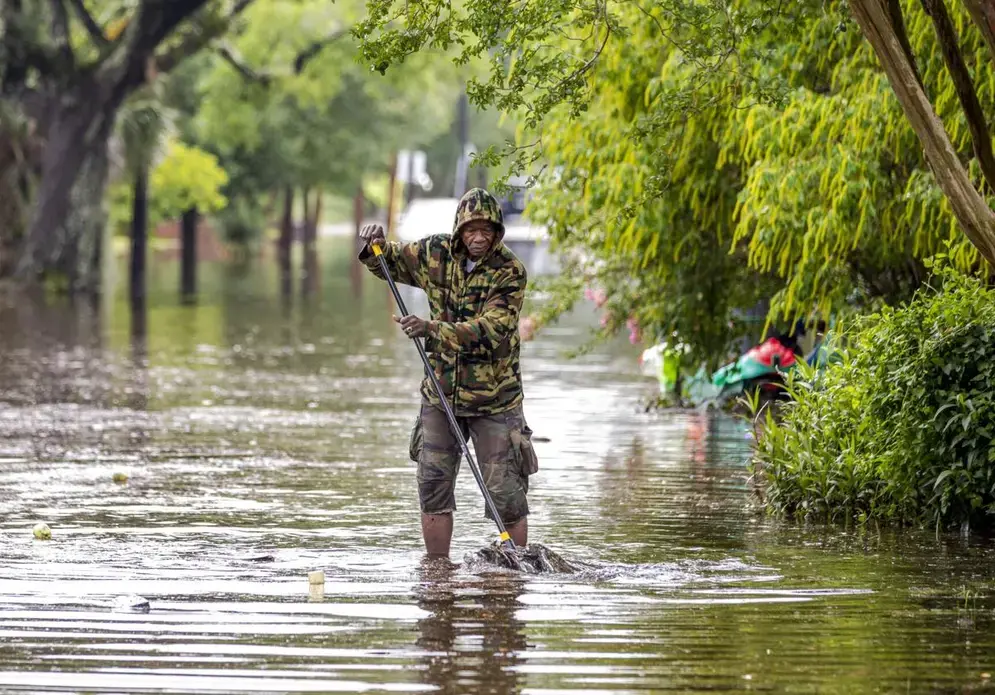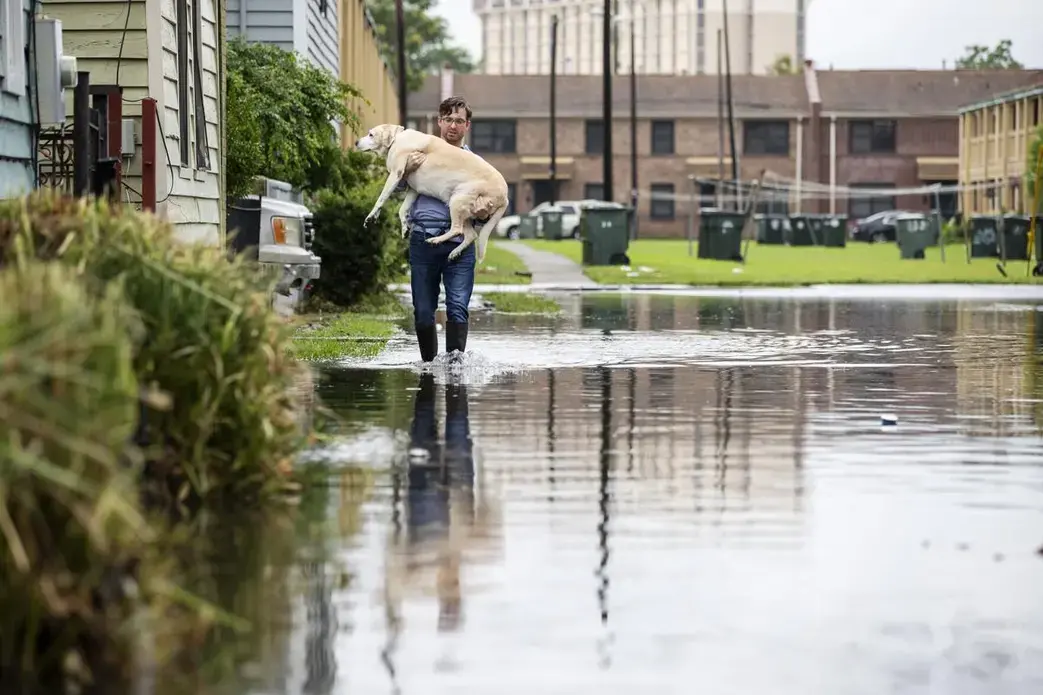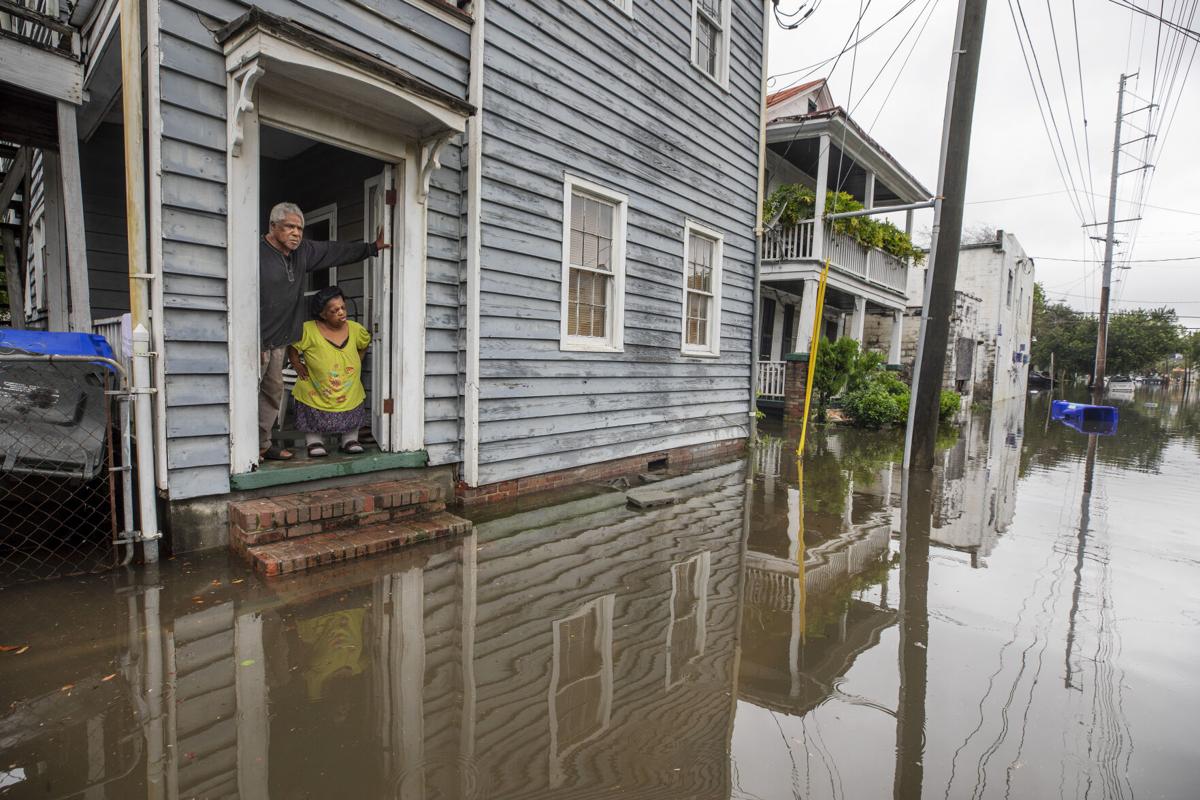
As Charleston dries out from the latest swamping storm to drown the city, officials are looking to an age-old weapon to help combat an ever-present threat from flooding fueled by climate change.
Charleston relied on its zoning laws over the past century to restrict building heights, control parking spaces, foster affordable housing and prioritize historic preservation.
But the city could soon use those regulations to manage an even bigger issue: water.
Charleston is frequently under siege these days from rising tides and more powerful storms. The latest assault occurred June 12, as volatile thunderstorms pummeled the region, choking drains, submerging streets and stalling cars across a wide swath of the city.
Parts of the peninsula and James Island saw more than 5 inches of rain between Saturday evening and Sunday morning, with critical arteries around Charleston’s Medical District among those brimming with floodwaters.
As a result of such storms, Charleston’s elected leaders are contemplating whether to overhaul the city’s zoning rules to limit development in flood-prone areas and encourage future growth in less-vulnerable parts of the city.
Charleston City Council is expected to vote on a new comprehensive plan this year, which will lay out recommendations for future development for the first time based on elevation levels and the hydrology of the city.
That 10-year plan won’t change the city’s laws on its own. But it could serve as a roadmap if Charleston leaders decide to rewrite zoning laws to help the city adapt to the king tides and rain bombs that continue to inundate streets and flood homes.
There is a growing appetite among city leaders to do just that.
“We are talking about linking zoning to the biggest problems that we all deal with in Charleston: water, sea level rise and flooding,” said Councilman Ross Appel, who represents parts of West Ashley and James Island. “If we are going to tell people where they can build and how they can build, we might as well be doing it based on science and with an eye toward the most important issue of our time.”
The importance of flood control was on full display over the weekend.
A mass of swollen, angry clouds descended on the region June 12, dumping torrential rains that engulfed streets, knocked out power to hundreds and stranded many unlucky enough to be caught outside in the deluge. A city police cruiser was among the casualties. Shoppers at the Charleston City Market had to scramble on top of display booths to escape floodwaters that cascaded through the market’s main thoroughfare.
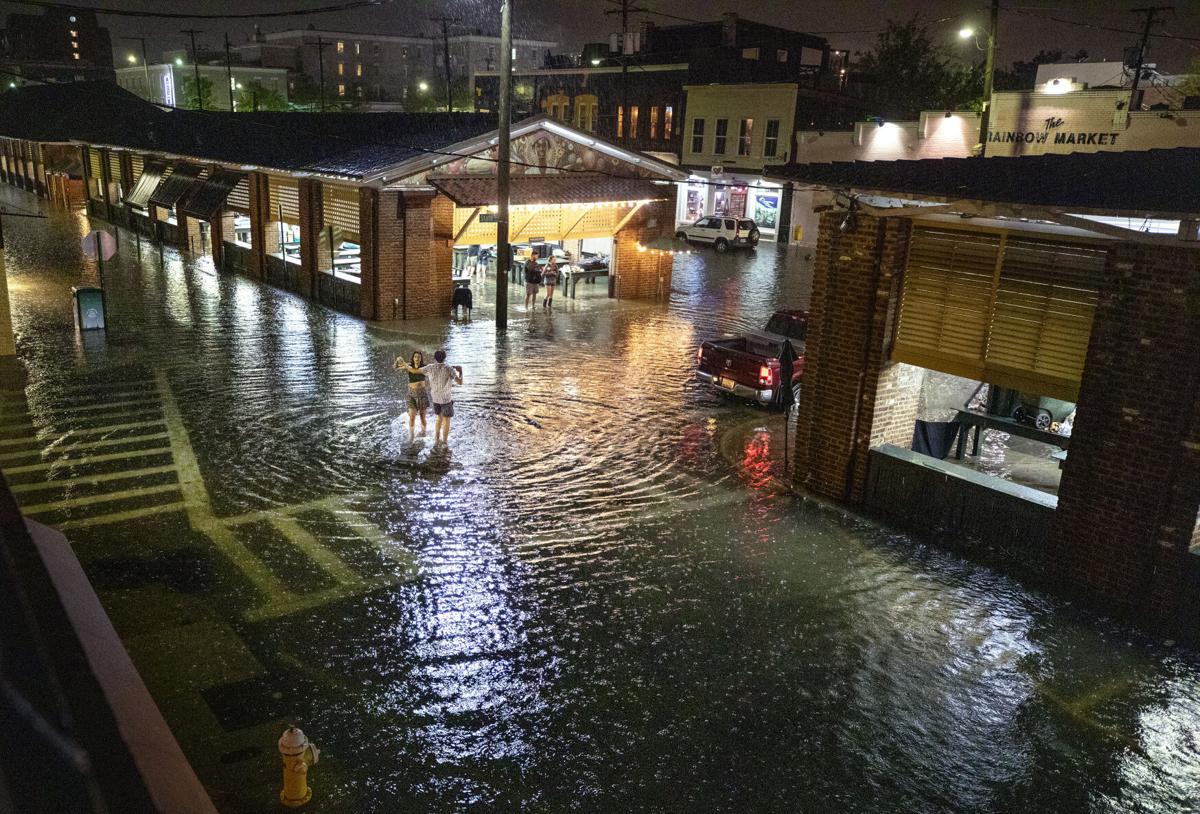
When the storm hit Saturday night, a fierce squall erupted over the Medical District. Within about 30 minutes, the normally bustling hospitals were surrounded by a murky moat.
By morning, at least 5½ inches had fallen in the district, creeping toward an emergency room entrance and covering nearly half of nearby Cannon Park.
With high tide at 10:45 a.m., the floodwater had nowhere to go. A thigh-deep brown soup pooled in spots by the hospitals, as police directed traffic off a normally busy Calhoun Street and onto side streets where motorists had few options to avoid deep water.
At the intersection of Gadsden and Bennett streets, drivers abandoned three cars. Other motorists warily approached barricades around the vehicles and decided against trying to push through.
The area has long been flood prone, and the city occasionally stations a portable pump there to whisk water from the basin toward the Ashley, a supplement to the city’s aging stormwater tunnels. But the pump was nowhere to be seen on June 13. That’s because the city contracts that work, and it is not available on Sundays, officials said.
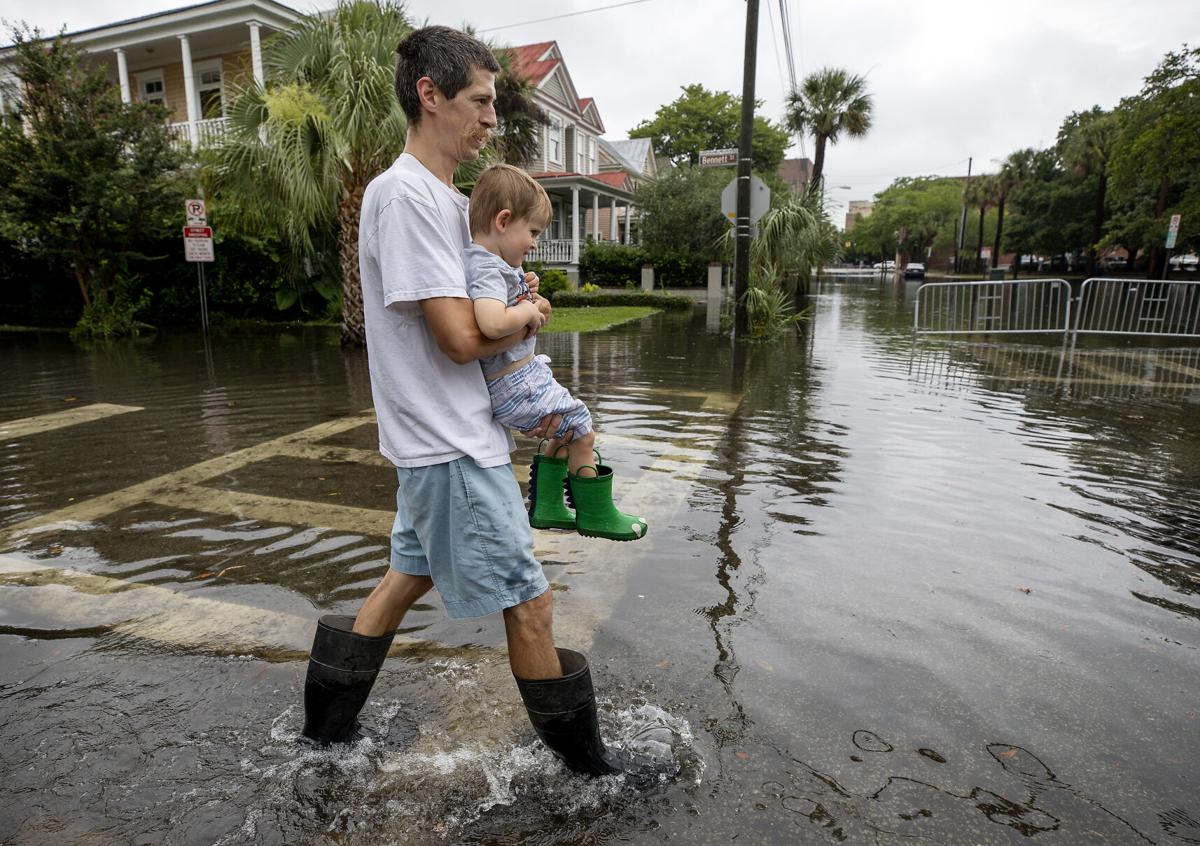
Zoning to the rescue?
Historically, zoning laws have been used in cities throughout the United States to stop conflicts among neighboring properties. Zoning allows local governments to prevent bars from moving in next to schools or chemical refineries from being built in residential neighborhoods.
But Charleston could take it a step further by using flooding data and elevation maps to determine what can be built on any given property within the city. The goal would be to eliminate or severely restrict development in lower-lying areas and to redirect construction to places that are less likely to flood in the future.
That, in turn, could help the city avoid costly home buyouts and expensive infrastructure improvements in the coming decades. The city already spent millions of dollars to buy out homes along Church Creek in West Ashley, and they don’t want to repeat those types of mistakes.
City Council has taken other steps in recent years to manage flooding. They approved rules that mandated the first floor of new homes and businesses be built 2 feet above a standard set by the federal government, and they upgraded the city’s stormwater regulations to stop new construction from making flooding worse on neighboring properties.
The zoning changes the city is considering could be a far more comprehensive solution to the city’s problems. It would likely cut off risky development before it begins.
Andy Sternad, an urban designer with Waggoner and Ball, conducted the land and water analysis that went into the city’s new comprehensive plan. He also helped to advise Charleston officials during the Dutch Dialogues, which sought to change how the city approached the problem of flooding.
There are very few cities in the country, Sternad said, that think about flooding and water when developing and enforcing their zoning laws.
That means Charleston could become a national leader if City Council chooses to pursue what is being coined as elevation-based zoning.
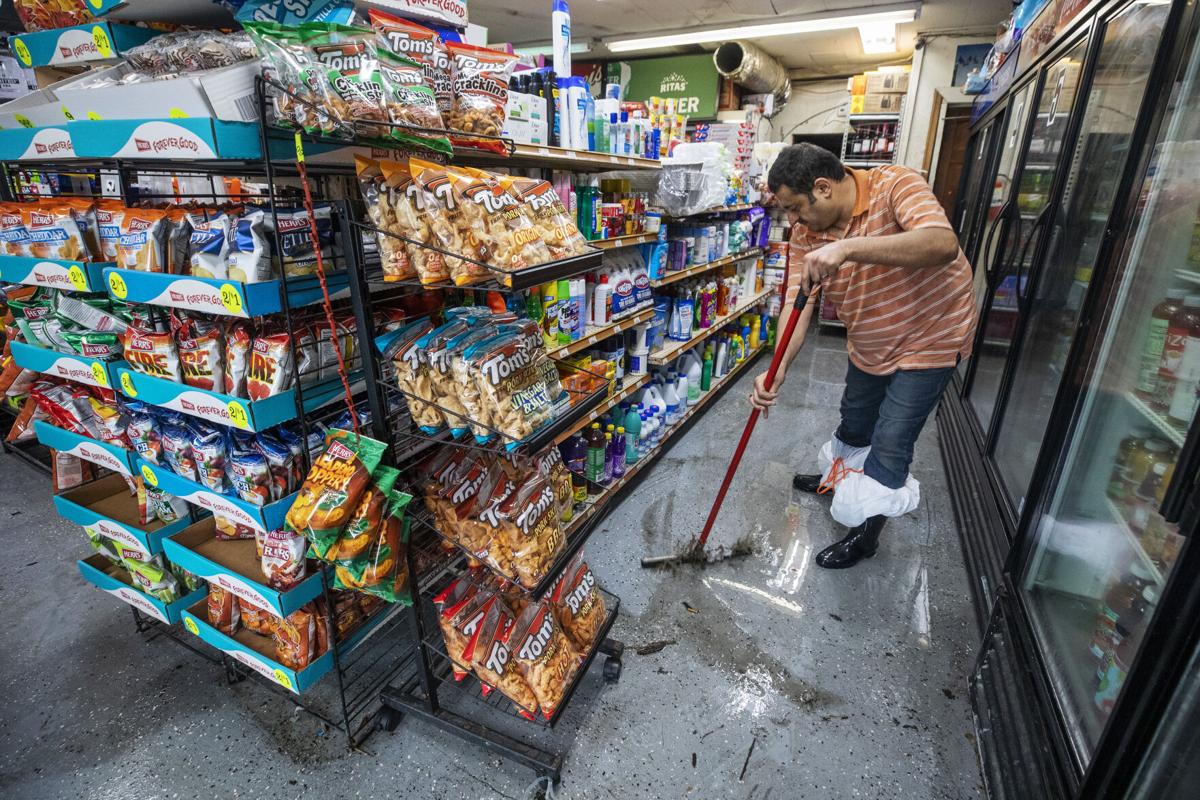
Reasonable expectations
Many Charleston residents are well aware of the threat that flooding poses to the region and their day-to-day lives.
A recent survey by the city’s planning department found that 78 percent of respondents were concerned about their home or property being damaged by flooding in the future.
Residents who experienced this latest deluge over the weekend echoed those sentiments.
Shirley Gibson has lived on Trumbo Street near Colonial Lake for more than 50 years. She has seen the flooding worsen over time and worries this early drenching was a bad omen for the 2021 hurricane season, which began June 1.
“I won’t dare leave town the latter part of August and September,” she said, referencing the point in the season that generally presents the most danger to Charleston.
Jerry Reddick, who has lived across the street from Gibson since 2009, is growing tired of worrying about the potential for flooding and the threat it poses for his home.
“The storms get on my nerves,” Reddick said. “Makes me think about moving. I am thinking about moving right now.”
Even against this backdrop, reshaping the city’s zoning laws could be a tough political sell in Charleston, which continues to be one of the hottest real estate markets in the country.
The changes that are being envisioned would not affect homeowners or businesses that are already in place. The city still plans to invest money into flood protections and adaptation strategies for existing communities.
But an elevation-based zoning strategy could drastically limit what developers can build in parts of the city moving forward. That is especially true in sections of Charleston that are at the highest risk from tidal flooding and stormwater runoff.
The city could cut back on development rights by limiting the number of housing units, for instance, that can be built on a single acre of property.
“That’s where this is going to get challenging,” said Appel, the first-term city councilman. “You are going to hear from those people. They are going to talk to lawyers. They are going to rattle sabers. But we have to be confident in what we are doing here. I think we can do it in a transparent, legal, accessible way.”
Appel, who works as a land-use attorney, said adapting the city’s zoning laws to take flooding into account will send a clear message about where the city does and does not want large-scale development to take place. It would make the city’s intentions known up front, he said.
That transparency could also help to avoid some of the issues that developers have with the city’s upgraded stormwater regulations.
Right now, some developers run into problems when they create designs and budgets for projects in Charleston. They formulate those plans based on what the city’s zoning code says they can build, only to find out later that the city’s new stormwater rules don’t allow for that level of development.
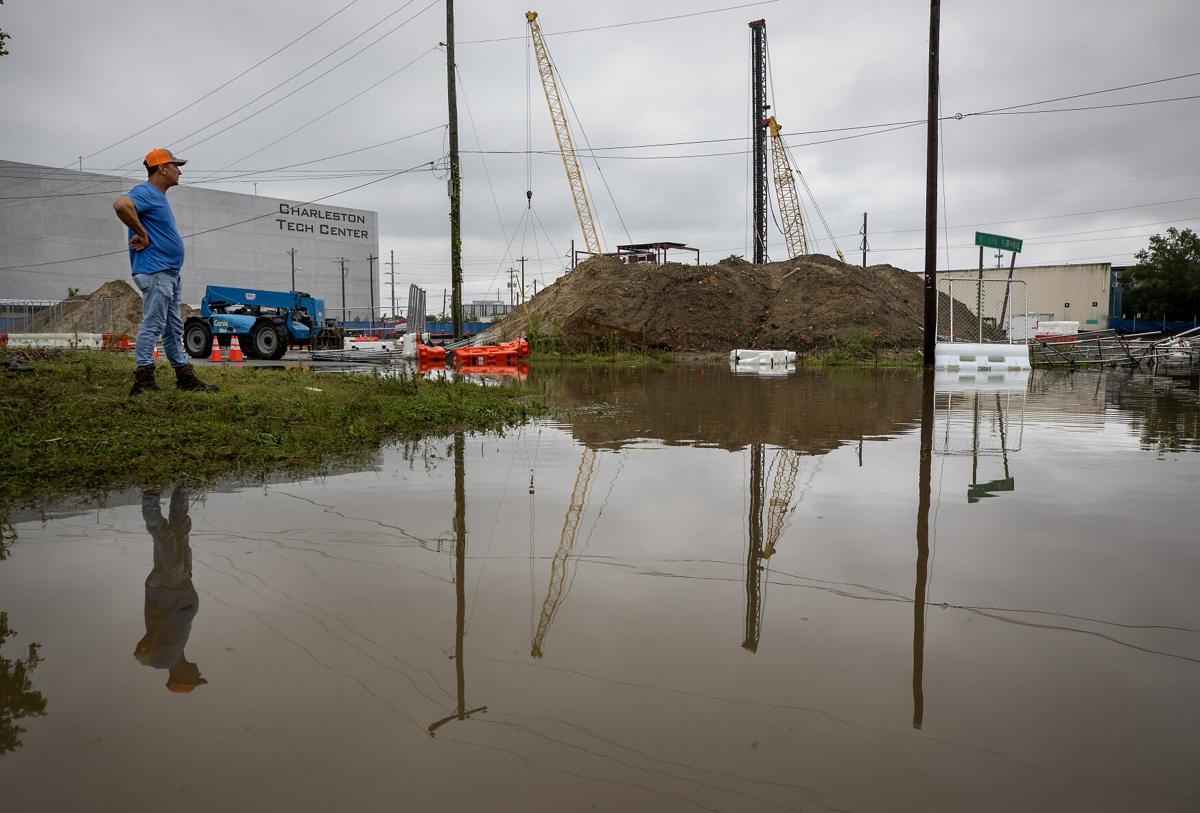
The companies go in thinking they can build 25 homes, for instance, and they learn later that they can only construct 10 homes without pushing water onto neighboring properties.
Those situations could be avoided more often if the city’s zoning code was also based around a property’s flood risk, said Matt Fountain, the city’s stormwater director.
“That’s where there is a really good use for zoning,” Fountain said. “It gives a reasonable expectation to residents and the development community, up front, about what is possible on these properties.”
Molding the future
Limiting development in low-lying areas won’t solve all of Charleston’s problems on its own. With the city’s population continuing to balloon, Charleston’s elected leaders will also need to designate areas where high-density development can increase.
That’s likely to mean taller buildings and more multi-use developments in areas of the city that are better protected from the future effects of climate change.
Charleston officials are already in the process of identifying some of those areas in the city’s new comprehensive plan.
On the peninsula, the city’s staff recommended the densest development along the upper reaches of King and Meeting streets, where multi-story apartment complexes continue to spring up.
They also highlighted similar areas for dense development along Maybank Highway on Johns Island and Sam Rittenberg Boulevard in West Ashley, where city leaders have been trying to encourage growth for years.
Those areas were chosen because of their relatively high elevation and their proximity to public transportation routes.
Councilman Mike Seekings, who represents the lower half of the Charleston peninsula, said the council can’t cut off development in the floodplains without giving the city somewhere else to grow. Limiting development across the board, he said, would make it impossible to fix the other major crisis facing the city: affordable housing.
“We can’t cut off the future,” Seekings said. “We need to mold the future in a way that is consistent with the realities and the challenges that we have.”
Advocacy groups are also lining up behind the recommendations laid out in the city’s new comprehensive plan. Cashion Drolet, who represents the Historic Charleston Foundation in front of the city, said encouraging denser development in some parts of Charleston will help preserve the historic features of other parts of the city.
“We think preservation and resilience go hand in hand,” she said.
Still, it could be difficult to get Charleston residents to agree to create pockets of high-density development throughout the city.
The recent surveys conducted by the planning department showed 70 percent of the respondents did not want Charleston officials to encourage dense development in areas that are on higher ground.
You don’t have to look any farther than Mount Pleasant to witness a public revolt against high-density development. Elected officials who pledged to resist large-scale development now dominate that Town Council after the public revolted against several large construction projects that were built over the past decade.
Seekings believes the public’s reservations about taller buildings and multi-family housing complexes in Charleston can be overcome with some additional education and outreach.
“Density is not a four-letter word when it is done properly and it is thought out,” Seekings said.
Charleston residents should have time to make up their minds about the city’s future growth strategies. The city does not expect to hire a consultant to work out a plan for elevation-based zoning until sometime after this year.


